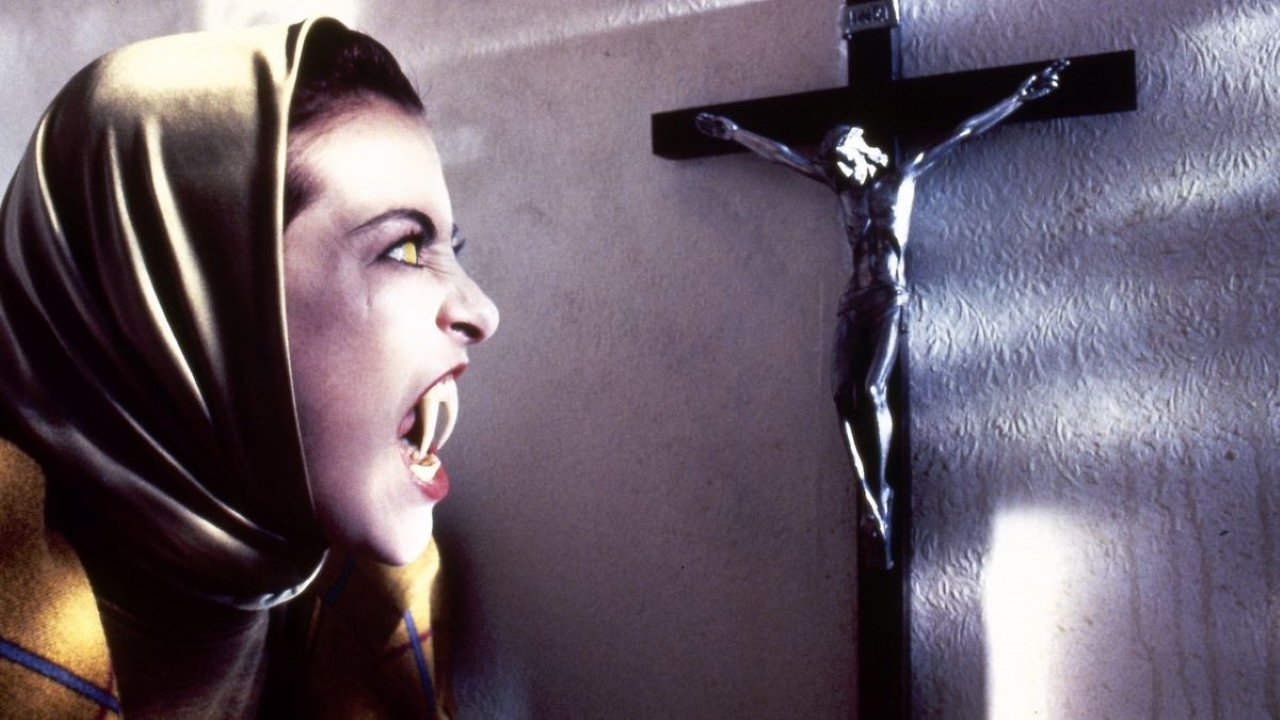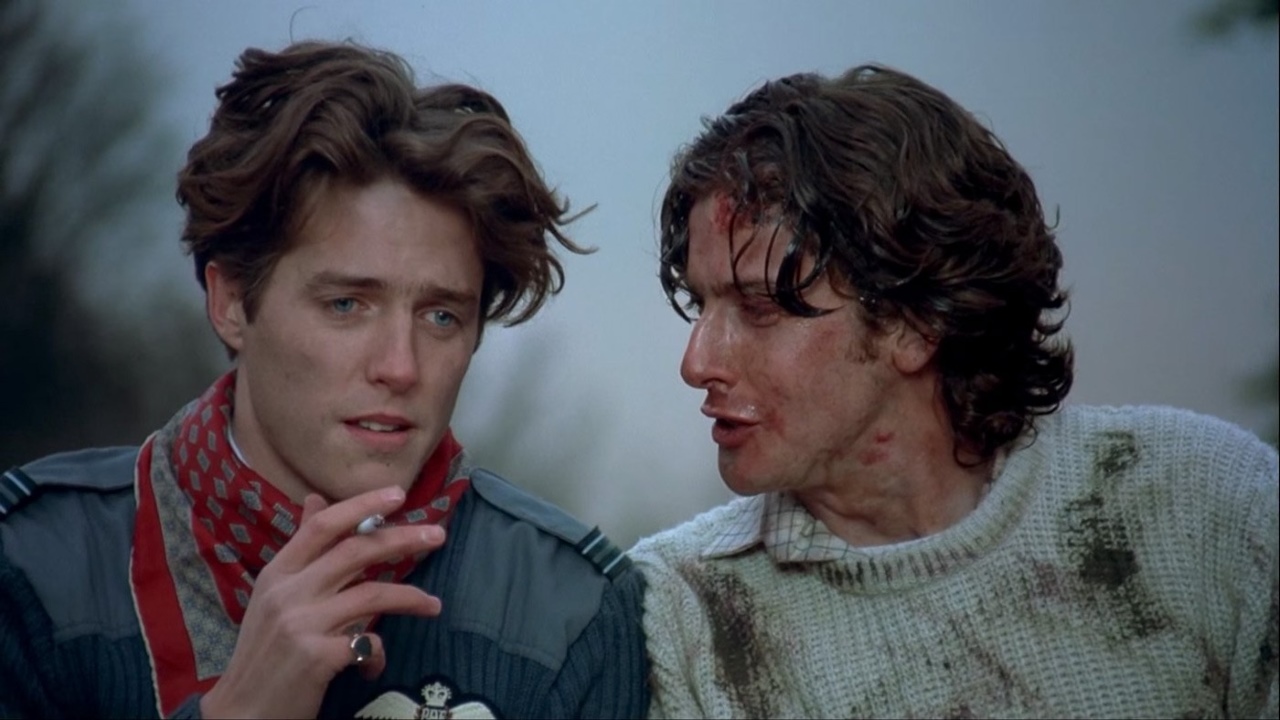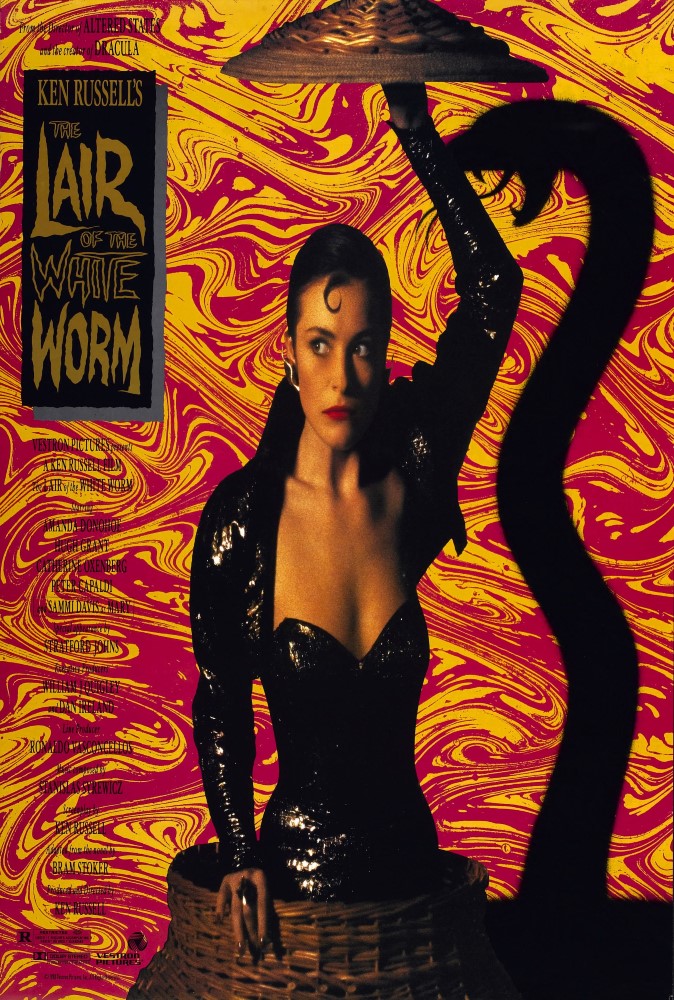Crew
Director/Screenplay/Producer – Ken Russell, Based on the Novel The Lair of the White Worm (1911) by Bram Stoker, Photography – Dick Bush, Music – Stanislas Syrewicz, Makeup Effects – Image Animation (Supervisors – Bob Keen, Geoff Portass & Roy Puddlefoot), Art Direction – Anne Tilby. Production Company – Vestron.
Cast
Hugh Grant (Lord James D’Ampton), Amanda Donohoe (Lady Sylvia Marsh), Peter Capaldi (Angus Flint), Sammi Davis (Mary Trent), Catherine Oxenberg (Eve Trent), Paul Brooke (PC Ernest Emy), Stratford Johns (Peters), Chris Pitt (Kevin)
Plot
Archaeologist Angus Flint unearths the skull of a giant worm that he believes was worshipped as a god in Roman times. Soon after, Lady Sylvia Marsh, the current priestess of the worm and part snake herself, returns to reinstate sacrifices. It is up to Lord James D’Ampton, heir to the original slayer of the worm according to legend, to stop her.
From his hysterically theatric biographies of the great composers and writers – The Music Lovers (1970), Mahler (1974), Lisztomania (1975) and Savage Messiah (1976) – to the acid trip fantasies of the lunatically OTT Tommy (1975) and Altered States (1980), and the seedy bump-and-grind of Whore (1991) and the great Crimes of Passion (1984), nobody quite did excess like Ken Russell does. Ken Russell is a director who made movies with the same sort of enthusiasm that schoolboys latch onto dirty magazines.
All of which brings us to The Lair of the White Worm. To counter his critics, Ken Russell seemed to go deliberately over the top with this one. Unfortunately, in attempting to parody what was already OTT farce in the first place, Russell just ends up with a silliness that frequently heads into orbit. Phallic and worm symbolism lurks in every shot – from Snake & Ladder games, to teapots, garden and vacuum cleaner hoses, to the lights of Amanda Donhoe’s Jag cruising through the woods, even the Concorde. At one point, Hugh Grant’s plan to deal with Amanda Donohoe is to put a giant set of stereo speakers on the roof of the ancestral mansion and play snake charmer music – and sure enough Donhoe pops her head up out of a basket and starts slinking across the floor.
There is an amazingly silly climax with Peter Capaldi charging into battle in a kilt, producing everything from grenades and mongeese out of his sporran and keeping zombified copper Paul Brooke staggering around by playing the bagpipe. There is an incredible dream sequence cat-fight between Amanda Donohoe and Catherine Oxenberg in stewardess uniforms aboard the Concorde while a bound Hugh Grant holds a pen at crotch level, which suddenly tilts up into an erect position as they struggle on the floor.


Amanda Donhoe, a prize over-actor, and a Russell regular ever since, has fun in the part, strumpeting about in black lingerie, thigh-high black leather boots, strap-on dildos and a vampish Mrs Peel look, seducing schoolboys and the like.
As with most of Ken Russell’s works, any resemblance to the source material is of pure coincidence – although if you’re one of the unfortunates who have read the incomprehensible Bram Stoker original The Lair of the White Worm (1911), there is little likelihood that there will be many crying out for less dramatic license. Most of the cast seem unable to keep their faces or accents straight – Catherine Oxenberg (a Yugoslavian princess heir) is notably miscast as a Midlands country girl. Ken Russell made much more entertaining films when he took himself more seriously and let his pretensions get the better of him.
Ken Russell (1927-2011)’s other genre films are:– the spy film Billion Dollar Brain (1967); the historical witch persecution film The Devils (1971); the quite deranged surrealist adaptation of The Who’s rock opera Tommy (1975); the sf film Altered States (1980); the psycho-sexual thriller Crimes of Passion (1984); Gothic (1986), centered around the events leading up to the inspiration for Mary Shelley’s writing Frankenstein (1818); Mindbender (1996), an hysterically bad biopic of the psychic fake Uri Geller; The Fall of the Louse of Usher (2002), Russell’s demented home movie take on Edgar Allan Poe; and an episode of the horror anthology Trapped Ashes (2006).


